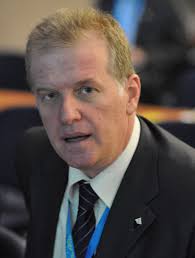
By Genc Pollo-
In April 2009, then a Deputy Prime Minister I led the Albanian delegation to the Second Global Forum Alliance of Civilizations that was held in Istanbul. This UN endorsed Alliance was initiated by the Turkish Prime Minister Erdogan and his Spanish counterpart Zapatero. It aimed to promote the tolerance, understanding and a peaceful or ideally amicable coexistence among the civilizations and the world’s cultural and religious traditions. Its inception four years after the attack on the New York Twin Towers, the profile of the two Prime Ministers and other elements made it obvious it was focusing mainly on the relationship between Europe, the West and the Muslim countries. Every participating state has to adopt a national plan to promote tolerance, understanding and amicable coexistence. A year later and in this spirit with Istanbul being European Capital of Culture Prime Minister Erdogan would declare: “This is a European city; with its heart, its culture, its civilization its people, its past, its future, it has always looked towards Europe. Istanbul has shaped European culture and has been shaped by it.”
Ten years later in Turkey, the State Council rescinded a 1935 edict by state founder Atatürk which did turn into a museum a mosque that before the Ottoman seizure used to be Hagia Sophia, Constantinople’s biggest and most famous church. On the same day President Erdogan decreed that the building should be run again as mosque by Dianet, the religious affairs authority. He went further to announce the first day the Friday prayers would be held there. Interestingly in his Arabic language statement Erdogan also signaled that the next step would be the liberation of the Jerusalem al Aqsa mosque (!). The latter is controlled by Israel and managed by Jordan.
Since that day the debate rages wether the 20 century Atatürk secularism still fits in the 21 century increasingly sectarian Turkey, wether the museum status of Hagia Sophia was an offense for both Christendom and Islam or wether the shrine could have dual use. Questions are raised also wether Muslims in a Turkey with innumerable mosques did really need another one or wether the couples of hundreds open churches are sufficient for few Christians there. But these would be issues for another note.
What matters today is that Hagia Sophia’s reconversion into a mosque was widely condemned and criticized in Europe, in the West and elsewhere; including by Turkish and Muslim leaders who candidly believe in the tolerance, understanding and amicable coexistence between religions and cultures.
National sovereignty vs International law
The Hagia Sophia of Constantinople and the National Theater of Tirana differ a lot in terms of historical weight and symbolic power. The first is globally renown since fifteen centuries while the full history of our Theater since its founding as the Skanderbeg Circle in 1938 by Albanian royal authorities was not known to many until the controversy of the last two years. What makes them resemble is the justification by both governments in front of the international criticism: “its an internal affair, a matter of national sovereignty”. In both cases though, the reverberations of the actions go beyond the state borders and affect non material interests and feelings in Europe and the world. This is obvious in the case of the Church of Constantinople; for the Theater in Tirana this was clearly formulated by the chairman of the Foreign Affairs Committee of the European Parliament who opening a committee debate on Albania spoke of “destruction of European cultural heritage”. In both cases the governments refused dialogue with legitimate domestic and foreign stakeholders. Further to that more concerning is the disregard or even the violation on international rules and obligations. In 1985, following a request by the Turkish government, Hagia Sophia was admitted in the UNESCO World Heritage Sites. This status makes it obligatory that any legal or physical change of the site must occur after consultations and perhaps approval by this UN body.
The National Theater was included this year among the seven most endangered cultural sites by Europa Nostra, the first partner of the European Commission in this field, This organization, after exchanges with the government and with the encouragement of the Commission, had secured funds from the European Investment Bank Institute for a restoration project.
Unfortunately neither Tirana nor Istanbul cared to follow international rules or self-assumed obligations.
One more distinction between the cases of Hagia Sophia and the Tirana Theater – the motives of the Turkish government appear to be political and electoral, whereas in Tirana, the motives have been exposed as highly corrupt. In Istanbul, things were run through procedures, paperwork, and statements; formally things appeared right. In Tirana, from the first special law on demolishing the theater through to a public private partnership to the last municipal council vote, almost all were unconstitutional, illegal, and irregular. Beyond this, the government sent armed police and bulldozers in a pre-dawn raid against civil activists and the historical building complex – actions that were similar to the Taliban’s destruction of the ancient Buddha statues in Bamyan, Afghanistan.
*Genc Pollo-
Albanian MP and former Chairman of the Parliamentary Committee on European Integration. He is also an ex-Deputy Prime Minister, Minister of Education; Telecoms
July 2020




